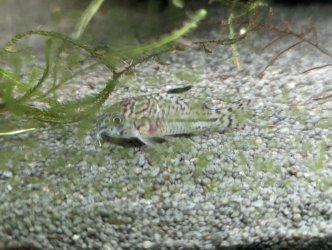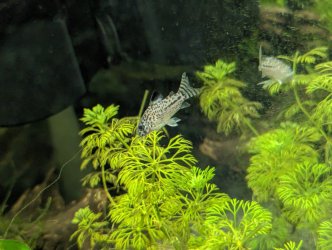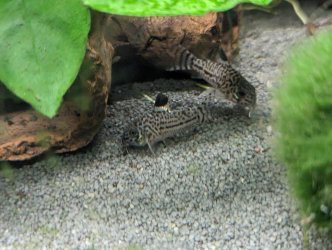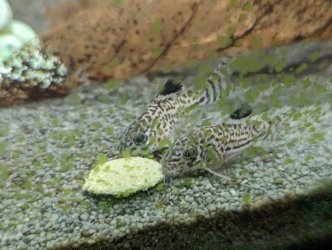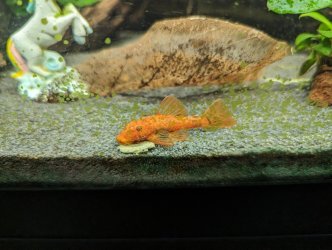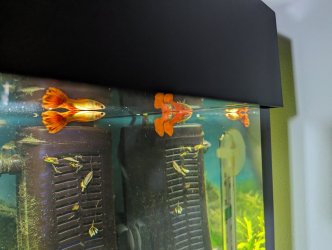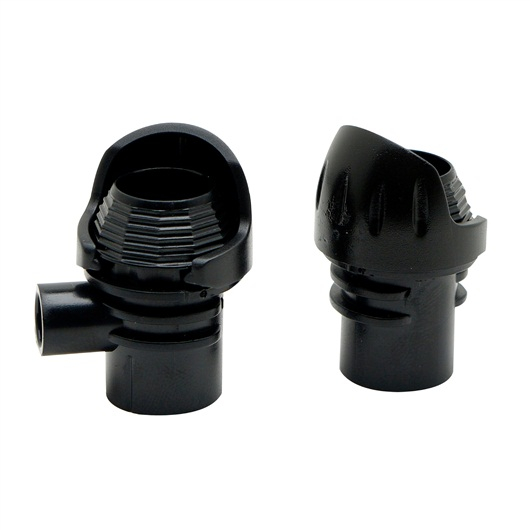So some of you may seen a post around a guppy I had that I had to euthanise. It was sat at the bottom of the tank for a considerable period of time, not moving, not eating even when the food was near and eventually was going to die and get eaten. If so you will also know that I lost a guppy a day or 2 before. Missing in action (Presumed and after this amount of time surely also dead)
So that was over a week ago. I was planning to replace the Guppies this weekend as that would then be a 2 week period (I don't know what the period should be)
Today I come home and OH NO! A guppy is lying on its back at the bottom of the tank being nibbled by a Cory. (So that is now 3 guppies in the space of a week)
My heart sank as with no more fish loss and no real signs of visable issues with the fish (I inspect often) I assumed I was ok.
I fish the guppy out and go into the routine that its feeding time. Few flakes for Guppies and catfish pellets for the Cory's/Bristle nose.
That is when all hell breaks loose. The Bristlenose attacks everything across the tank, guarding all food across the bottom (35 x 121.5 tank dimensions, so some area to cover)
Now the bristlenose has been known to be a bit of a git at feeding time, but normally its lunge here and there and the other fish skitter off and find food elsewhere or retry. Nothing has been hurt before.
This time it goes all Mike Tyson on one of the Cory's, that shoots off, lands upside down (head down, tail up) in some Java Moss, where it does not move for 5 minutes. At this point I figure farewell my sweet sweet Cory (Note my Cory's are the love of my tank, the rest of the fish are additions) I get my net and lift the lid of the tank.
At this point the Cory moves, slowly and sadly but not dead at least. (So I thought)
It turns around and I see a huge dark red splodge about half the size of its body.
Now I know I will either find the Cory dead tomorrow, or never see it again.
This comes to my questions.
Clearly I am not going to get new Guppies this weekend. Disease is still an option and a new unknown death was discovered.
However given what I have seen, should I be getting rid of my Bristlenose, as beautiful as she is, My entry to last months fish of the month competion. (pssst I know the answer, I need someone else to say it)
Secondly, when should I look at introducing new fish, is 2 weeks too short?
Thirdly, I thought Bristlenose fish were supposed to be peaceful. Could something trigger this, or did I just get a wrong one!
Note, for questions on the disease front.
Water parameters fine and not changed for months.
Nothing new introduced to the tank.
25% Water change each week, conditioned.
So that was over a week ago. I was planning to replace the Guppies this weekend as that would then be a 2 week period (I don't know what the period should be)
Today I come home and OH NO! A guppy is lying on its back at the bottom of the tank being nibbled by a Cory. (So that is now 3 guppies in the space of a week)
My heart sank as with no more fish loss and no real signs of visable issues with the fish (I inspect often) I assumed I was ok.
I fish the guppy out and go into the routine that its feeding time. Few flakes for Guppies and catfish pellets for the Cory's/Bristle nose.
That is when all hell breaks loose. The Bristlenose attacks everything across the tank, guarding all food across the bottom (35 x 121.5 tank dimensions, so some area to cover)
Now the bristlenose has been known to be a bit of a git at feeding time, but normally its lunge here and there and the other fish skitter off and find food elsewhere or retry. Nothing has been hurt before.
This time it goes all Mike Tyson on one of the Cory's, that shoots off, lands upside down (head down, tail up) in some Java Moss, where it does not move for 5 minutes. At this point I figure farewell my sweet sweet Cory (Note my Cory's are the love of my tank, the rest of the fish are additions) I get my net and lift the lid of the tank.
At this point the Cory moves, slowly and sadly but not dead at least. (So I thought)
It turns around and I see a huge dark red splodge about half the size of its body.
Now I know I will either find the Cory dead tomorrow, or never see it again.
This comes to my questions.
Clearly I am not going to get new Guppies this weekend. Disease is still an option and a new unknown death was discovered.
However given what I have seen, should I be getting rid of my Bristlenose, as beautiful as she is, My entry to last months fish of the month competion. (pssst I know the answer, I need someone else to say it)
Secondly, when should I look at introducing new fish, is 2 weeks too short?
Thirdly, I thought Bristlenose fish were supposed to be peaceful. Could something trigger this, or did I just get a wrong one!
Note, for questions on the disease front.
Water parameters fine and not changed for months.
Nothing new introduced to the tank.
25% Water change each week, conditioned.



